Posts (page 17)
-
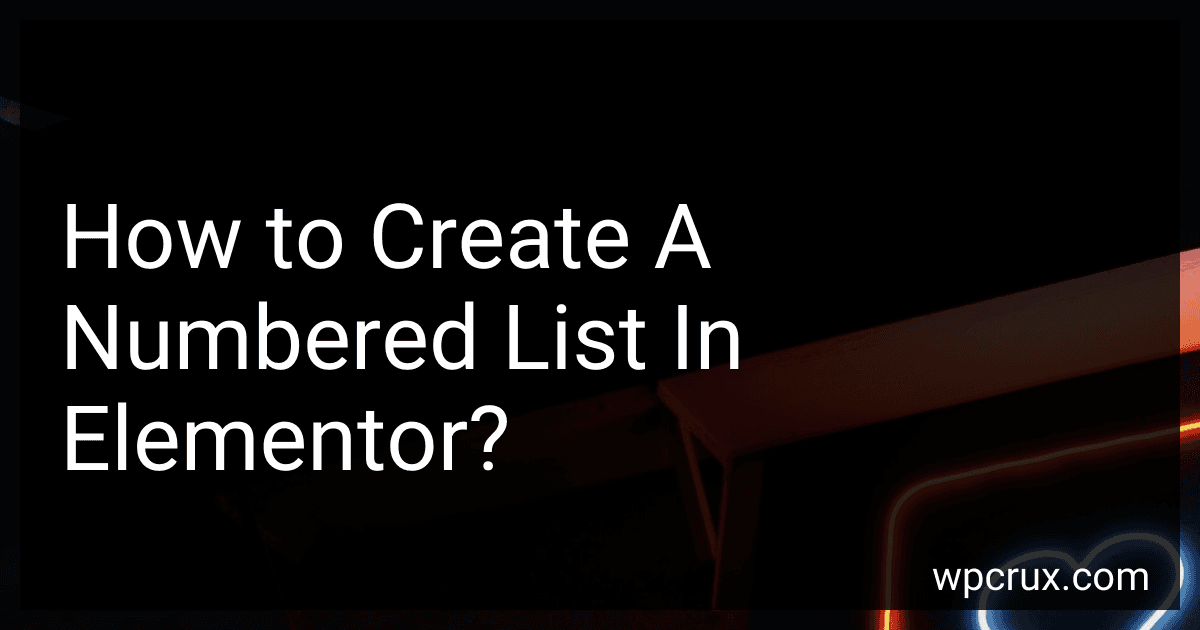 3 min readTo create a numbered list in Elementor, simply add a Text Editor widget to your page. Then, highlight the text that you want to turn into a numbered list and click on the "Numbered List" icon in the Text Editor toolbar. Elementor will automatically convert your text into a numbered list format. You can also customize the style and appearance of the numbered list by adjusting the settings in the Text Editor widget.
3 min readTo create a numbered list in Elementor, simply add a Text Editor widget to your page. Then, highlight the text that you want to turn into a numbered list and click on the "Numbered List" icon in the Text Editor toolbar. Elementor will automatically convert your text into a numbered list format. You can also customize the style and appearance of the numbered list by adjusting the settings in the Text Editor widget.
-
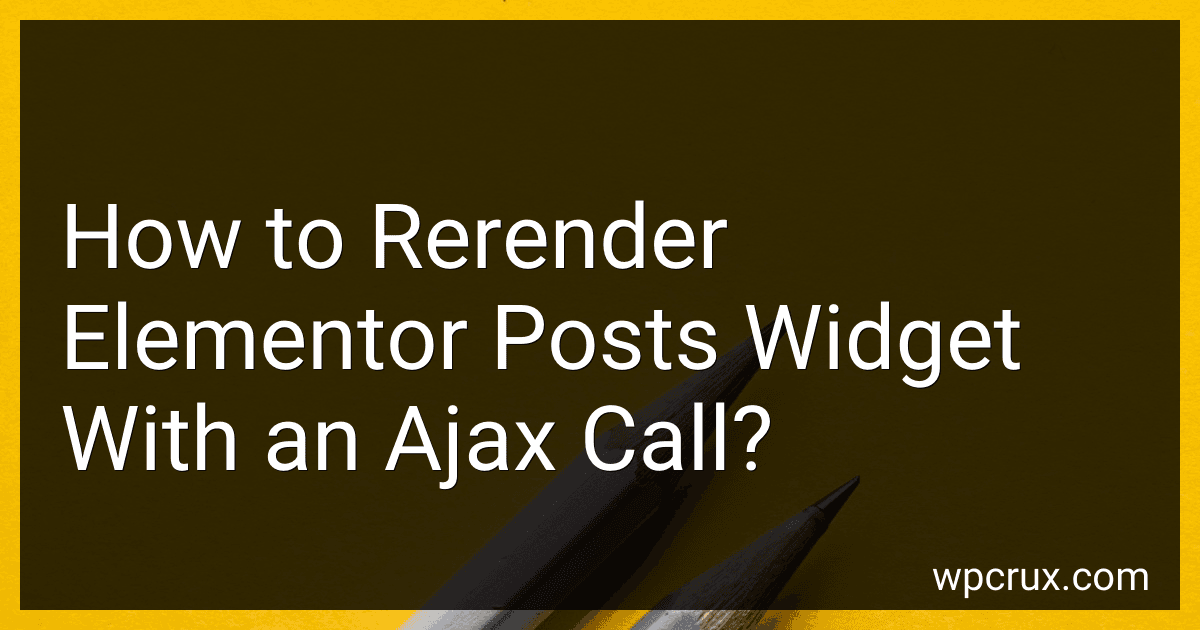 5 min readTo rerender an Elementor posts widget with an AJAX call, you can use a combination of JavaScript and PHP code. First, you need to create a custom AJAX handler in your theme's functions.php file that will fetch the posts data and return it in JSON format. Then, you will use JavaScript to trigger the AJAX call when needed and update the posts widget with the new data. Make sure to enqueue the necessary scripts and styles in your theme files to make it work properly.
5 min readTo rerender an Elementor posts widget with an AJAX call, you can use a combination of JavaScript and PHP code. First, you need to create a custom AJAX handler in your theme's functions.php file that will fetch the posts data and return it in JSON format. Then, you will use JavaScript to trigger the AJAX call when needed and update the posts widget with the new data. Make sure to enqueue the necessary scripts and styles in your theme files to make it work properly.
-
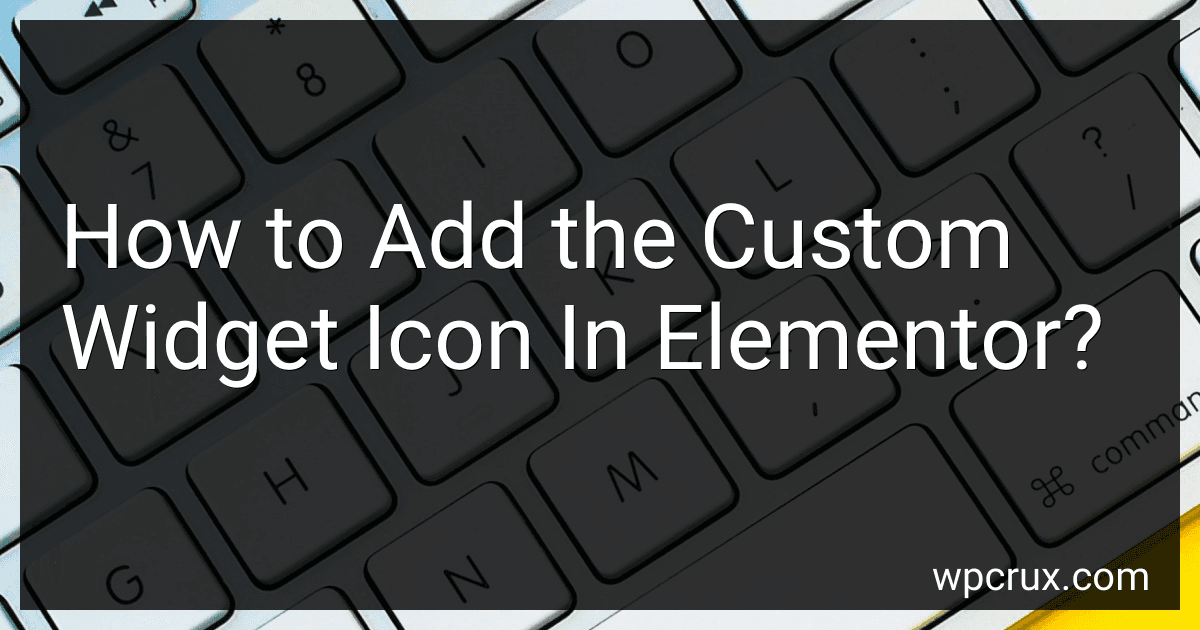 5 min readTo add a custom widget icon in Elementor, you can use the following steps:Create a custom icon using an image editing tool.Save the icon in a suitable file format (e.g. PNG).Upload the icon to your WordPress media library.Copy the URL of the icon file.In the Elementor editor, drag and drop the widget you want to customize onto the page.In the widget settings, look for the "Icon" option.Click on the default icon and select the "Custom" option.
5 min readTo add a custom widget icon in Elementor, you can use the following steps:Create a custom icon using an image editing tool.Save the icon in a suitable file format (e.g. PNG).Upload the icon to your WordPress media library.Copy the URL of the icon file.In the Elementor editor, drag and drop the widget you want to customize onto the page.In the widget settings, look for the "Icon" option.Click on the default icon and select the "Custom" option.
-
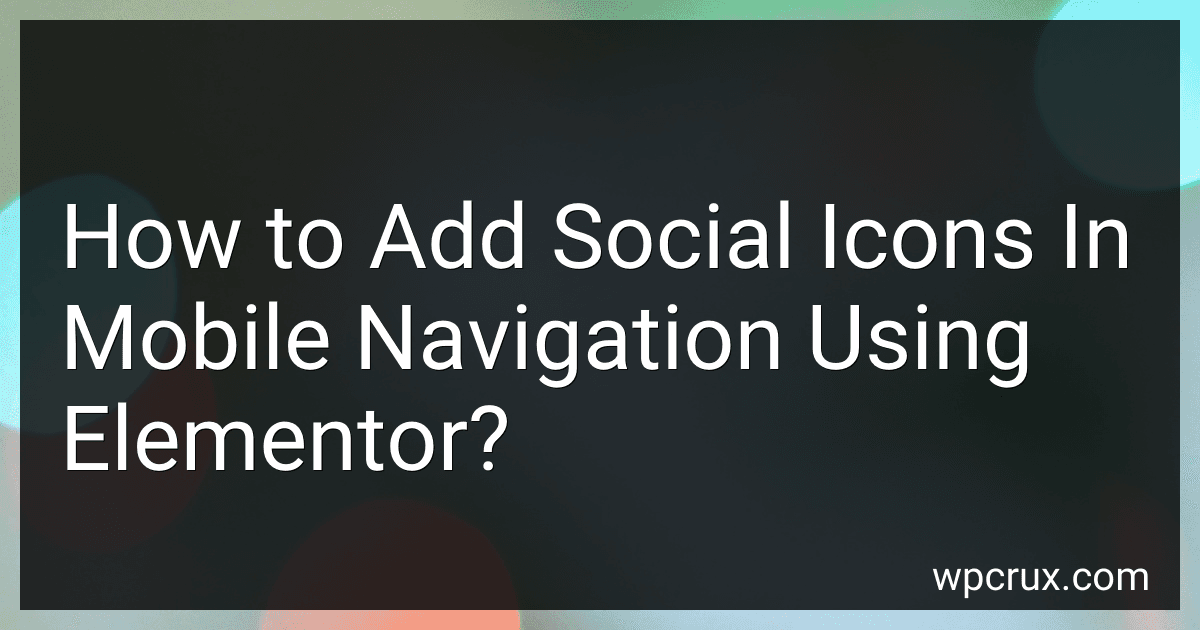 4 min readTo add social icons in mobile navigation using Elementor, follow these steps:Open your Elementor editor. Navigate to the section where you want to add the social icons in your mobile navigation menu. Add a new widget or element to the section. Search for the "Social Icons" widget in the Elementor widgets panel. Drag and drop the "Social Icons" widget into the section.
4 min readTo add social icons in mobile navigation using Elementor, follow these steps:Open your Elementor editor. Navigate to the section where you want to add the social icons in your mobile navigation menu. Add a new widget or element to the section. Search for the "Social Icons" widget in the Elementor widgets panel. Drag and drop the "Social Icons" widget into the section.
-
 5 min readTo add a click event to a popup in Elementor, you can follow these steps:After creating your popup in Elementor, go to the section or element within the popup that you want to trigger the click event. Click on the section or element to select it. In the Elementor editor, go to the Advanced tab in the panel on the left-hand side. Under the Advanced tab, you will see an option called "CSS ID" or "CSS Classes". Enter a unique identifier for the element in this field.
5 min readTo add a click event to a popup in Elementor, you can follow these steps:After creating your popup in Elementor, go to the section or element within the popup that you want to trigger the click event. Click on the section or element to select it. In the Elementor editor, go to the Advanced tab in the panel on the left-hand side. Under the Advanced tab, you will see an option called "CSS ID" or "CSS Classes". Enter a unique identifier for the element in this field.
-
 5 min readTo add a new Elementor post programmatically, you can use WordPress functions like wp_insert_post() to create a new post and then use Elementor functions to assign a template to it. You can start by creating a new post using wp_insert_post() function and providing the necessary post parameters like post title, content, post status, etc.
5 min readTo add a new Elementor post programmatically, you can use WordPress functions like wp_insert_post() to create a new post and then use Elementor functions to assign a template to it. You can start by creating a new post using wp_insert_post() function and providing the necessary post parameters like post title, content, post status, etc.
-
 8 min readTo make a WordPress theme compatible with Elementor, it is important to ensure that the theme is well-coded and follows best practices. This includes using proper naming conventions for theme files, creating a stylesheet that is easy to override, and providing hooks for Elementor to integrate seamlessly.Additionally, the theme should have responsive design elements to ensure that it looks good on all devices. This includes using media queries and flexible grid layouts.
8 min readTo make a WordPress theme compatible with Elementor, it is important to ensure that the theme is well-coded and follows best practices. This includes using proper naming conventions for theme files, creating a stylesheet that is easy to override, and providing hooks for Elementor to integrate seamlessly.Additionally, the theme should have responsive design elements to ensure that it looks good on all devices. This includes using media queries and flexible grid layouts.
-
 4 min readTo include global styles in Elementor, you can use the built-in custom CSS feature within the Elementor editor. By adding your global styles in the custom CSS section, you can apply them to all elements on your website created with Elementor. This way, you can maintain a consistent design throughout your website without having to manually apply styles to each individual element.
4 min readTo include global styles in Elementor, you can use the built-in custom CSS feature within the Elementor editor. By adding your global styles in the custom CSS section, you can apply them to all elements on your website created with Elementor. This way, you can maintain a consistent design throughout your website without having to manually apply styles to each individual element.
-
 6 min readTo open an external link in an Elementor popup, you can create a button or text link in your Elementor layout and then apply the popup feature to that element. Inside the popup settings, you can add the external link URL in the "Link" section. This way, when the user clicks on the button or text link, the external link will open in a popup window on your website.[rating:e7f80520-9716-4f5c-a17e-e050633562ae]What is the role of popups in marketing strategies.
6 min readTo open an external link in an Elementor popup, you can create a button or text link in your Elementor layout and then apply the popup feature to that element. Inside the popup settings, you can add the external link URL in the "Link" section. This way, when the user clicks on the button or text link, the external link will open in a popup window on your website.[rating:e7f80520-9716-4f5c-a17e-e050633562ae]What is the role of popups in marketing strategies.
-
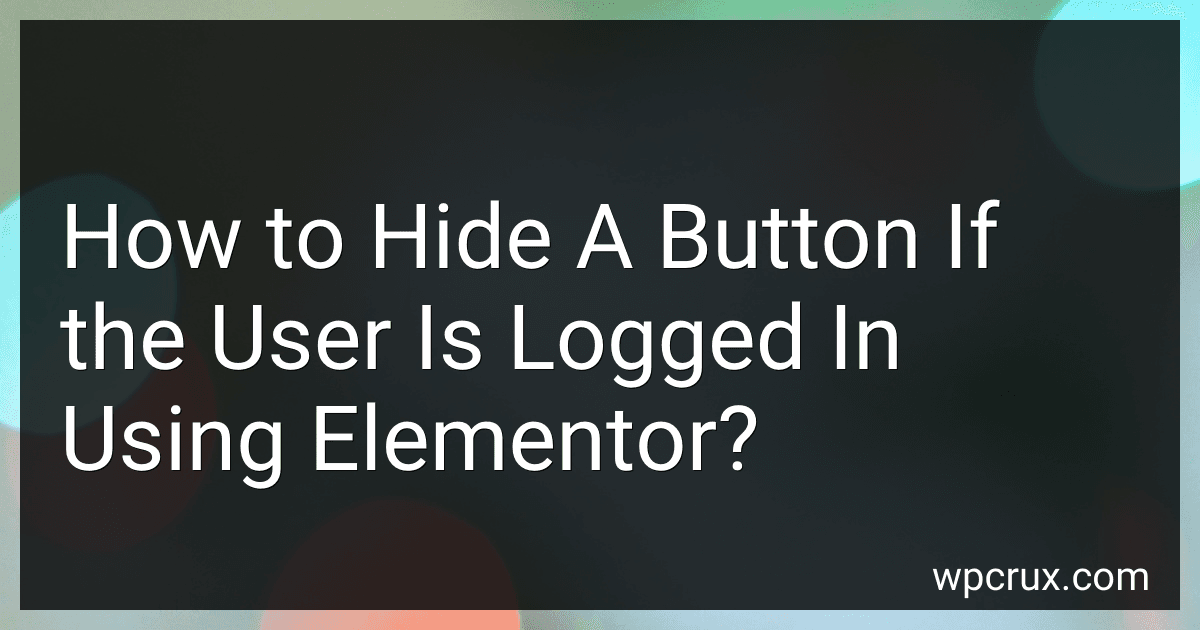 3 min readTo hide a button if the user is logged in using Elementor, you can utilize the built-in features of Elementor Pro. By adding dynamic visibility settings to the button element, you can choose to hide the button for users who are logged in. Simply go to the button settings, navigate to the advanced tab, and set the visibility conditions based on the user login status. This way, the button will only be visible to users who are not logged in, effectively hiding it for logged-in users.
3 min readTo hide a button if the user is logged in using Elementor, you can utilize the built-in features of Elementor Pro. By adding dynamic visibility settings to the button element, you can choose to hide the button for users who are logged in. Simply go to the button settings, navigate to the advanced tab, and set the visibility conditions based on the user login status. This way, the button will only be visible to users who are not logged in, effectively hiding it for logged-in users.
-
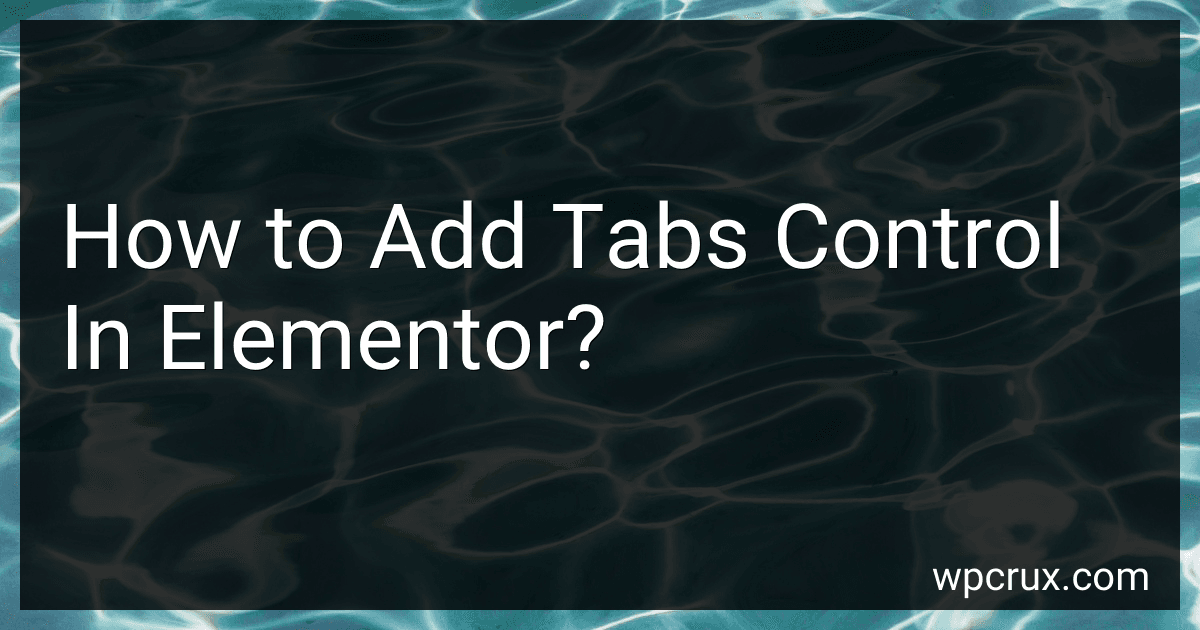 6 min readTo add tabs control in Elementor, first select the section where you want to add the tabs. Then, go to the left panel and search for the "Tabs" element from the widget list. Drag and drop the Tabs element into the section. You will see multiple tabs appear on your canvas. Edit each tab by clicking on the tab title and content to add your desired text, images, or other elements.
6 min readTo add tabs control in Elementor, first select the section where you want to add the tabs. Then, go to the left panel and search for the "Tabs" element from the widget list. Drag and drop the Tabs element into the section. You will see multiple tabs appear on your canvas. Edit each tab by clicking on the tab title and content to add your desired text, images, or other elements.
-
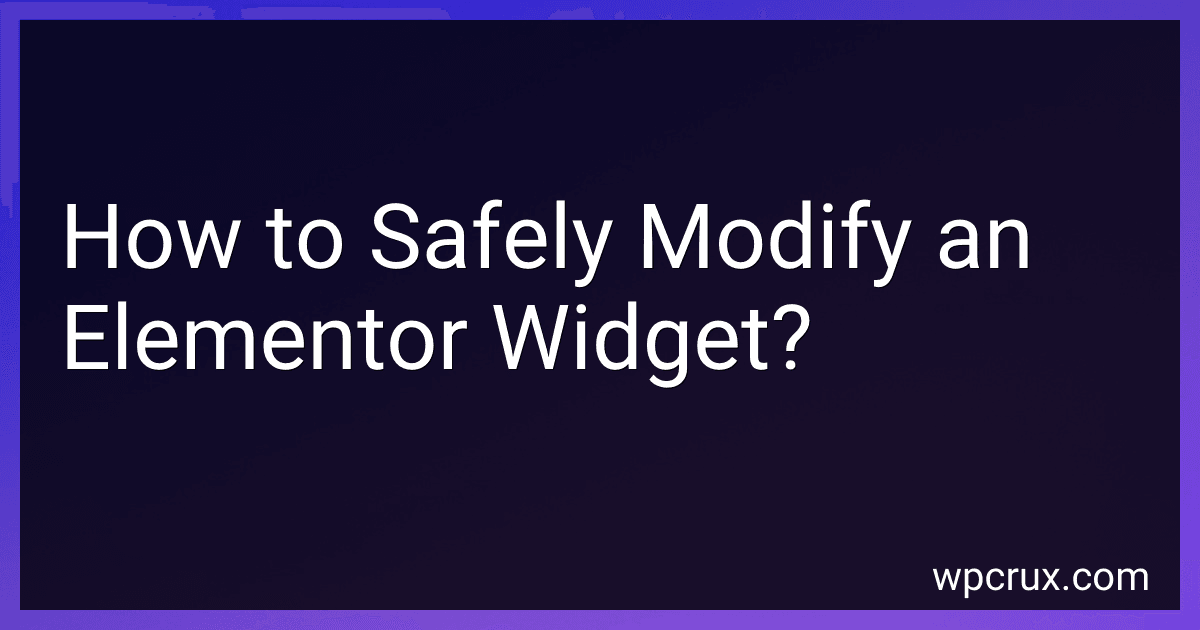 4 min readTo safely modify an Elementor widget, it is important to first create a child theme for your website. This will ensure that any changes you make to the widget will not be overridden when the theme is updated.Next, locate the specific widget you want to modify within the Elementor editor. Use the Custom CSS feature within Elementor to make minor style changes, such as adjusting colors or fonts.For more significant modifications, you may need to use custom code.
4 min readTo safely modify an Elementor widget, it is important to first create a child theme for your website. This will ensure that any changes you make to the widget will not be overridden when the theme is updated.Next, locate the specific widget you want to modify within the Elementor editor. Use the Custom CSS feature within Elementor to make minor style changes, such as adjusting colors or fonts.For more significant modifications, you may need to use custom code.